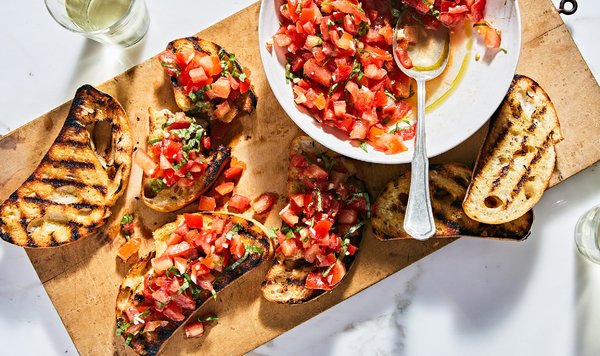The Origins of Bruschetta
Bruschetta (pronounced brew-SKET-uh, not brew-SHET-uh) is easily found in restaurants throughout the United States and Europe, but often what you are served outside Italy bears little resemblance to the real thing. (For example, if the topping is some form of tomato sauce, it is not real bruschetta!)
The most common type of bruschetta is toasted bread topped with fresh tomatoes dressed with garlic, basil, olive oil, and salt. Note that it’s super important to toast the bread first (preferably over a wood-burning fire!) and then add the ingredients cold. You do not want hot tomatoes on top of bread!
But if you travel to Tuscany, for example, for some classic crostini (another word for bruschetta), you’ll find such toppings as chicken liver or “black” kale (sometimes called Tuscan kale or Lacinato kale).
In Abruzzo, the most famous version is topped with a local pork salami called “ventricina.” The most basic bruschetta in Italy? Toasted bread rubbed with garlic, drizzled with olive oil, and sprinkled with salt. This version is also known as fett’unta (literally, oily slice) or panunta (oily bread).
The Origins of Bruschetta
Bruschetta also has a long and I would say noble history. Regardless of whether it dates back to the Etruscans or the Ancient Romans, as some purport, one thing is certain: for centuries it fed laborers and farmers with days’ old bread. It served both as a hearty snack or meal for those doing hard manual labor, and as a way to salvage bread that had gone stale. This might not be the loftiest manifestation of what has become a culinary genre all its own, but it is surely the most fundamental.
Finally, the beauty of bruschetta is all about its simplicity. There is no way to make a good bruschetta from bad ingredients. It is at its essence all about how good the bread and olive oil are (and most would say that in fact, the quality of the olive oil is the number one deciding factor), although all the ingredients need to be good for a good bruschetta.
Watch this video:


